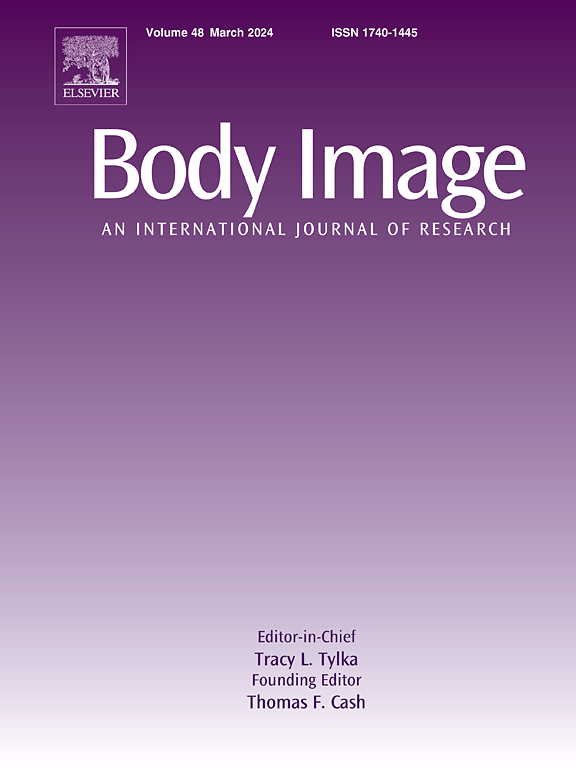Exposure to simulated nature promotes positive body image irrespective of the presentation modality: A comparison of images, 2-dimensional film, and 360° immersive film
IF 5.2
1区 心理学
Q1 PSYCHIATRY
引用次数: 0
Abstract
Previous studies have shown that exposure to simulated natural environments can elevate state body appreciation, but stimulus sets have been limited to the use of images and 2-dimensional (2D) film. To extend this work, we examined the relative impact of images, 2D film, and a 360° immersive film on immediate, state body appreciation. A total of 136 German-speaking adults from Austria (71.3 % women; age range 18–69 years) were randomly assigned to one of three conditions, in which they viewed an image set, a 2D film, or a 360° film depicting the same natural environment. Before and after viewing the stimuli, they completed measures of state body appreciation, affect, and desire for aesthetics. Our results showed that state body appreciation improved in all three conditions, with effect sizes ranging from Cohen’s d = 0.26 (2D film) to 0.52 (360° film). Presentation modality did not significantly shape improvements in state body appreciation; that is, the elevation in state body appreciation was equivalent across all three groups. Participants also experienced improvements in feelings of pleasantness, but again this was independent of the experimental group. These results suggest exposure to simulated nature may improve state body appreciation irrespective of the presentation modality.
无论采用哪种展示方式,接触模拟大自然都能促进积极的身体形象:图像、二维电影和 360° 沉浸式电影的比较
以往的研究表明,暴露于模拟的自然环境中可以提高身体状态鉴赏力,但刺激集仅限于使用图像和二维(2D)电影。为了扩展这项工作,我们研究了图像、2D 电影和 360° 沉浸式电影对即时、状态身体欣赏的相对影响。来自奥地利的 136 名讲德语的成年人(71.3% 为女性,年龄在 18-69 岁之间)被随机分配到三个条件中的一个,分别观看图像集、2D 电影或 360° 电影,描绘的是相同的自然环境。在观看刺激物之前和之后,她们完成了身体欣赏状态、情感和审美欲望的测量。我们的结果表明,在所有三种情况下,身体状态鉴赏力都有所提高,效应大小从 Cohen's d = 0.26(2D 电影)到 0.52(360° 电影)不等。演示模式对身体状态鉴赏力的改善没有明显影响;也就是说,身体状态鉴赏力的提升在所有三个组别中都是相同的。参与者的愉悦感也得到了改善,但这同样与实验组无关。这些结果表明,无论采用哪种呈现方式,暴露于模拟的大自然中都可能会提高身体的状态鉴赏力。
本文章由计算机程序翻译,如有差异,请以英文原文为准。
求助全文
约1分钟内获得全文
求助全文
来源期刊

Body Image
Multiple-
CiteScore
8.70
自引率
28.80%
发文量
174
期刊介绍:
Body Image is an international, peer-reviewed journal that publishes high-quality, scientific articles on body image and human physical appearance. Body Image is a multi-faceted concept that refers to persons perceptions and attitudes about their own body, particularly but not exclusively its appearance. The journal invites contributions from a broad range of disciplines-psychological science, other social and behavioral sciences, and medical and health sciences. The journal publishes original research articles, brief research reports, theoretical and review papers, and science-based practitioner reports of interest. Dissertation abstracts are also published online, and the journal gives an annual award for the best doctoral dissertation in this field.
 求助内容:
求助内容: 应助结果提醒方式:
应助结果提醒方式:


